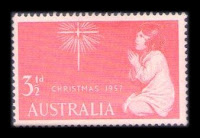Why is Christmas celebrated on the 25th of December?
Christmas or Christ's Mass is one of the most globally recognized midwinter celebrations. A winter festival was the most popular festival of the year in many cultures, culminating on the Winter Solstice, the shortest day of the year.
In 46 BCE, Julius Caesar in his Julian calendar determined that the winter solstice occurred on December 24 (for the Northern Hemisphere).
So, starting with December 25, the days get longer again.
This apex was called “Dies Natalis Solis Invicti “ which means "the birthday of the unconquered Sun." Early Christians believed that Jesus Christ was equally unconquered and consequentially they wanted his birthday to occur at that time of the year. Also, like many of the biblical prophets before Him, they assumed that He was conceived during the Vernal Equinox - exactly 9 months before the Winter Solstice.
Before Christianity, Winter Solstice was celebrated with a feast in honour of Saturn, the Roman god of agriculture and plentiful harvests. The feast was called Saturnalia, and it was introduced around 217 BC Saturnalia was a time of celebration, of visiting friends, and of gift-giving, particularly of wax candles (cerei).
Northern Europe also celebrated a winter festival called Yule, Scandinavians still call Christmas Jul. In England, since 900 AD, the word Yule has been synonymous with Christmas.
Good deeds and gift giving in the tradition of St. Nicholas is now well entrenched in the spirit of Christmas. Including his practice of not admitting of being the gift-giver: by attributing many gifts as coming from ‘Santa’; especially when giving to children.
The Twelve Days of Christmas is probably the most misunderstood part of the church year among Christians. Contrary to urban legend, these are not the twelve days before Christmas, but are the twelve days after Christmas ending on the January 6th; the Epiphany. This is day that is usually celebrated as the time the Wise Men or Magi arrived to present gifts to the young Jesus; hence in many cultures it is also a day of gift-giving.
The popular song "The Twelve Days of Christmas" is seen by many as simply a ‘nonsense’ song for children. However, some have suggested that it is a song of Christian instruction and even a song kept alive by the persecution of Catholics in England (this has been shown to be unlikely and has no historical evidence to support it). However, the idea that it might be a mnemonic for children in their learning of the catechism has some merit; for example:
My TRUE love = God
ONE Partridge = Jesus
TWO Turtle Doves = The Old and New Testaments
THREE French Hens = Faith, Hope and Charity or the Holy Trinity itself.
FOUR Calling Birds = the Four Gospels and/or the Four Evangelists
… and so on
4. Which Nation released the first Christmas stamp?
It is a matter of interpretation and definition as to which stamp is the first Christmas issue. The Canadian map stamp of 1898 bears the inscription: "XMAS 1898", but it was actually issued to mark the inauguration of the Imperial Penny Postage rate.
Some claim that the first Christmas stamp in the world was printed in Denmark in 1904 as it said 'Julen 1904' (Christmas 1904). However, most collectors reckon that the 1943 issues from Hungary were the first, real Christmas stamps as they had more than just words and depicted the Message to the Shepherds, the Nativity, and the Adoration of the Magi . The next Christmas stamps did not appear until 1951 (Cuba); 1954 (Haiti); 1955 (Luxembourg and Spain ), then in 1957 (Australia, Korea, and Liechtenstein ).
Shown above are Australia’s first Christmas stamps: a 3½d Red and a 4d Purple. They were issued on the 6th of November 1957. Their design was adapted and engraved by Donald Cameron from the original painting "The Infant Samuel at Prayer" by Sir Joshua Reynolds.
86,258,000 copies of the 3½d and 94,333,200 copies of the 4d were printed by W.C.G. McCracken on un-watermarked paper with perforation 14¼ x 14.
Cheers!














this is a very lovely article.I hope this author replies me
ReplyDelete